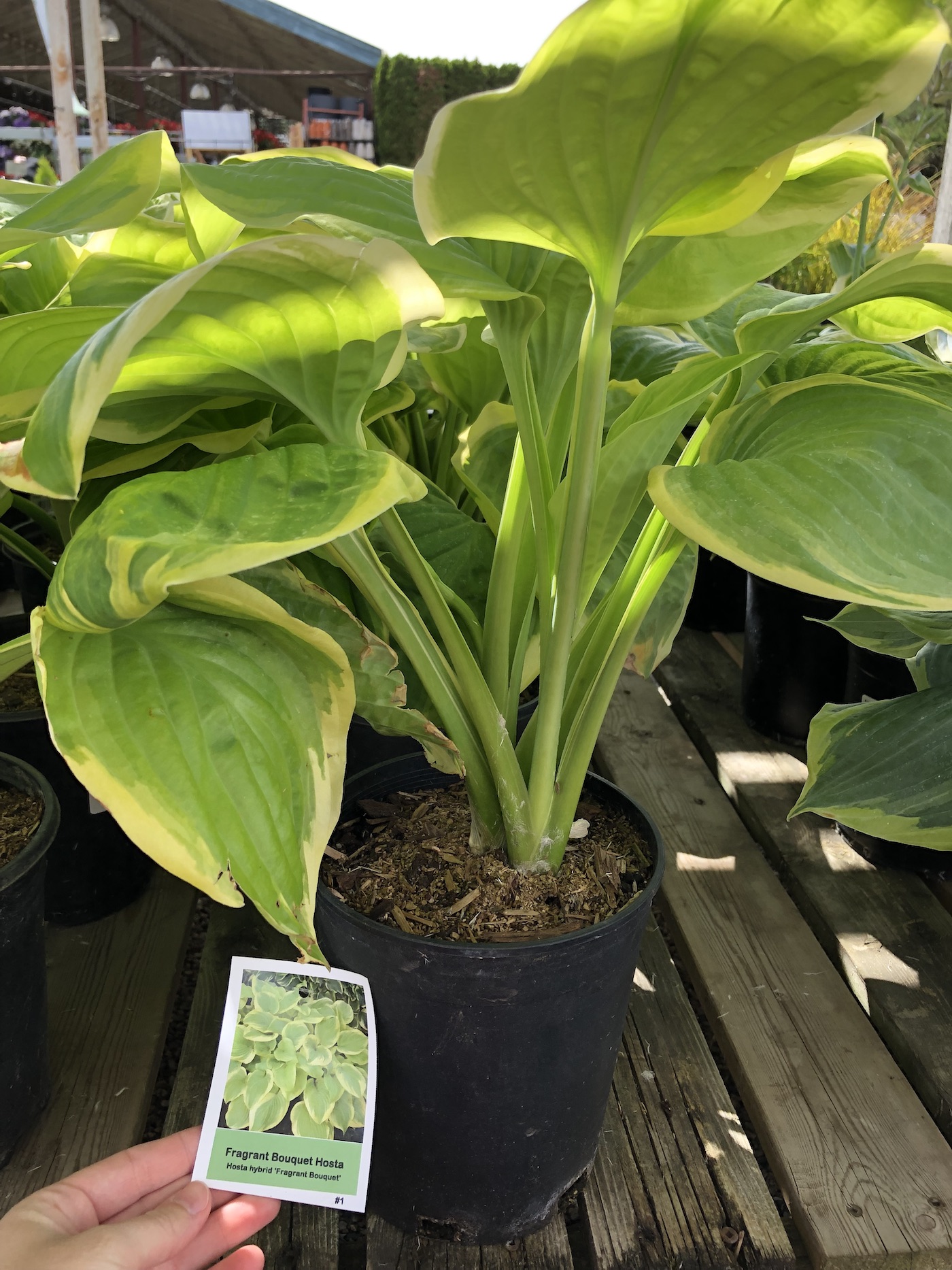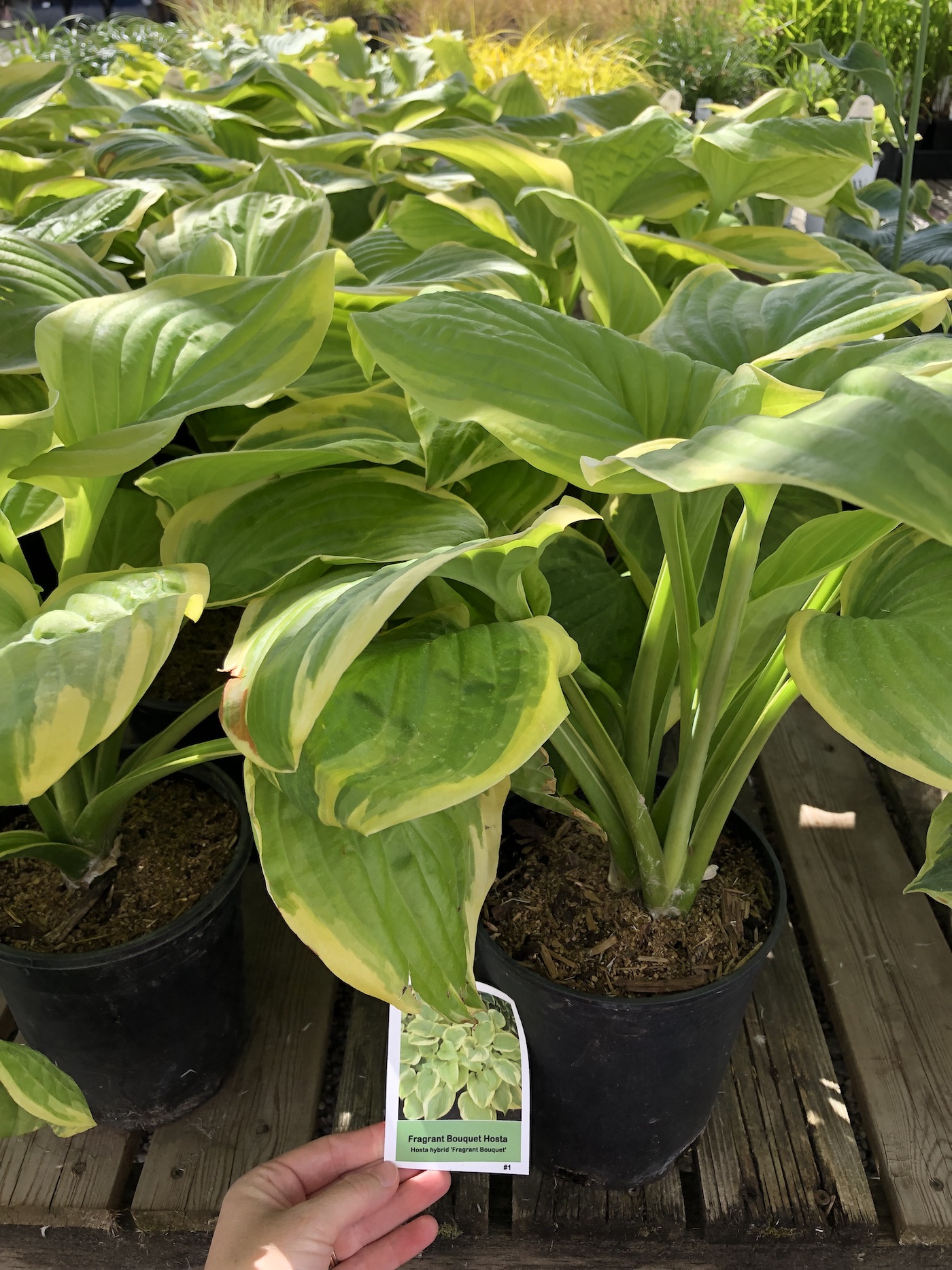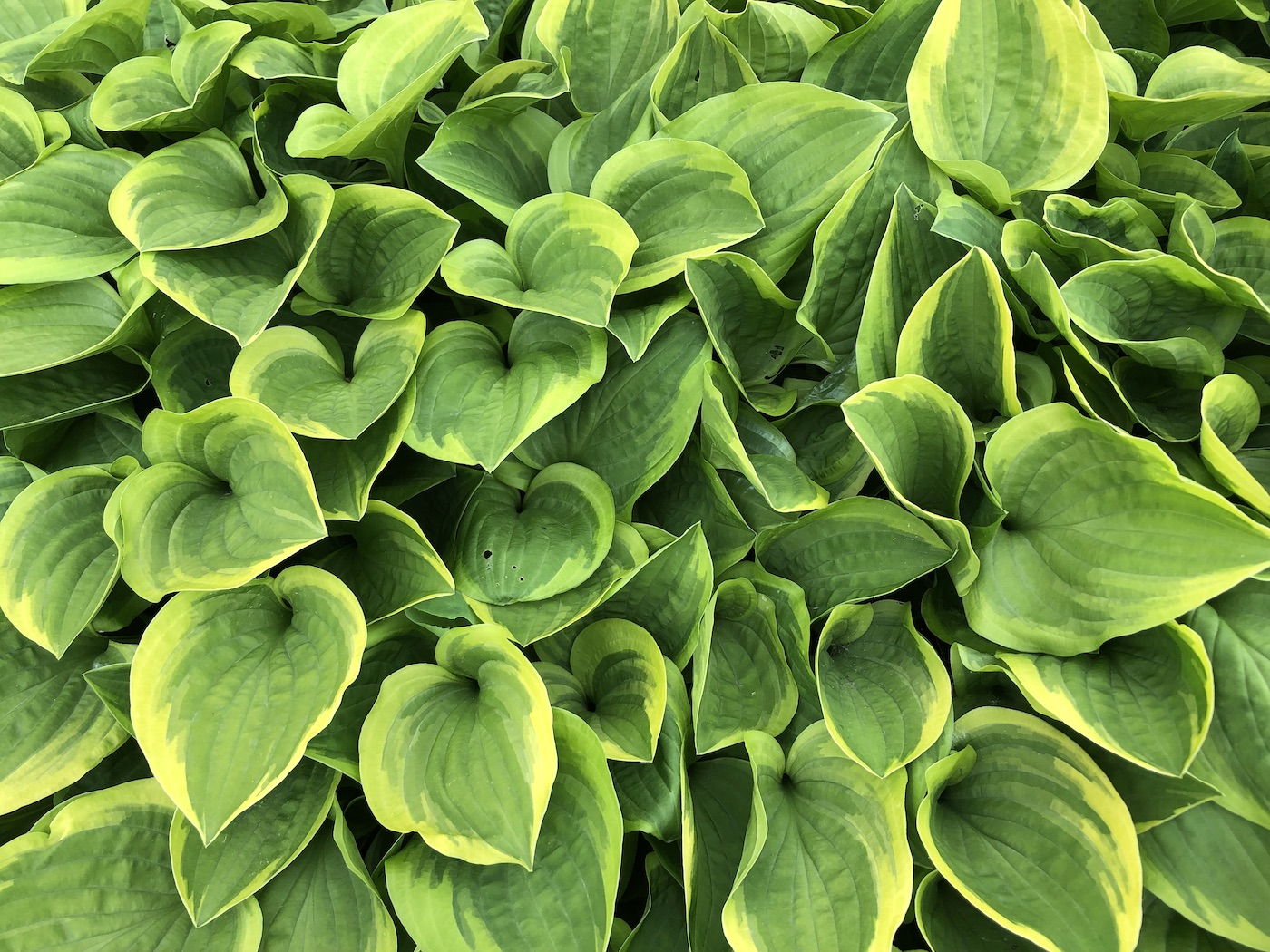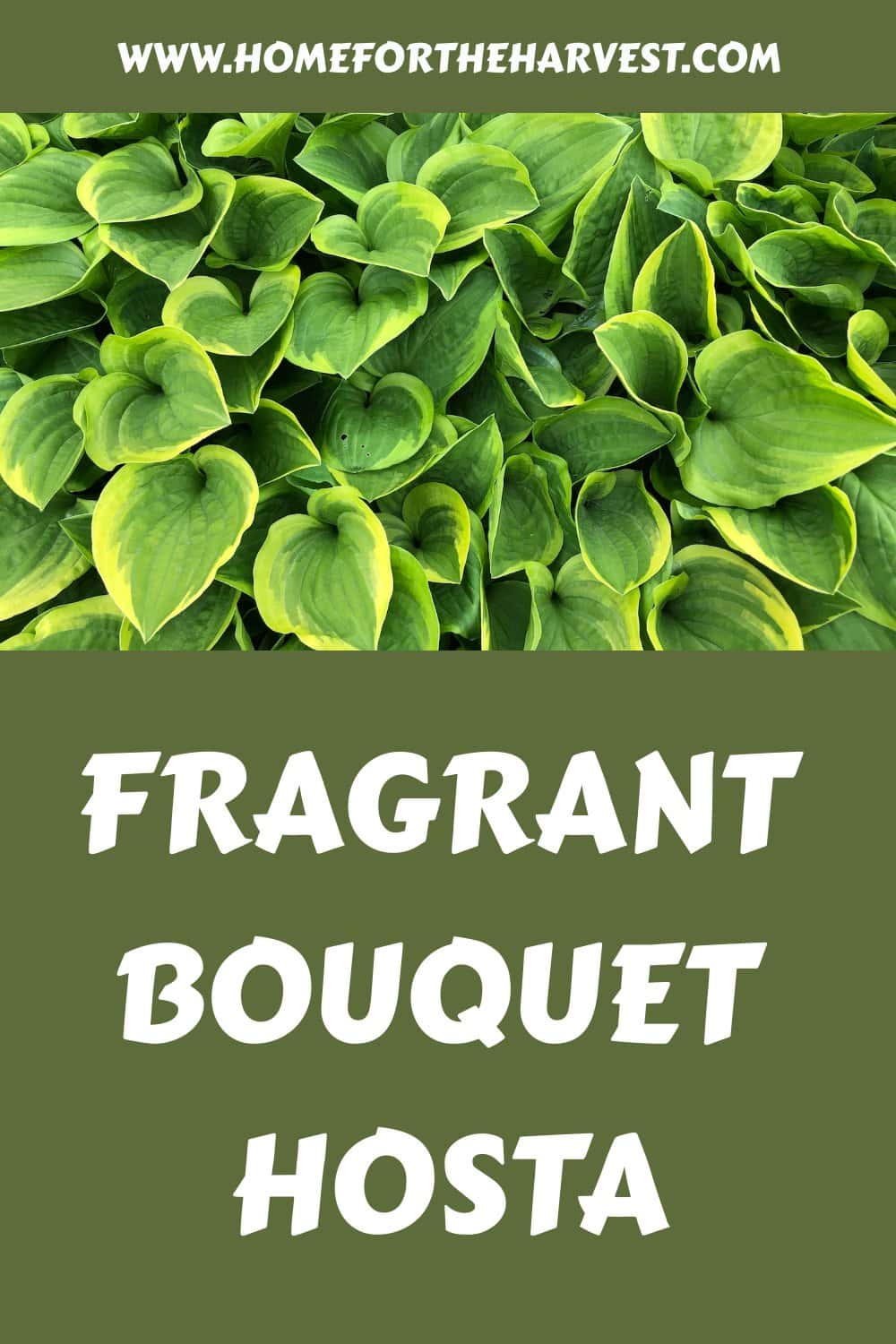The Fragrant Bouquet hosta is a popular variegated variety known for its wonderfully scented flowers. This variety has bright green leaves with a cream-to-yellow leaf margin. Fragrant Bouquet hosta grows well in partial sun to partial shade areas in zones 3-9 and thrives in well-drained, slightly acidic soil.
Fragrant Bouquet Hosta basics
The Fragrant Bouquet hosta is a beautiful cultivar of hosta plant that can be used for both feature gardens and general shade landscaping. It has fragrant blooms that will add a touch of beauty to any setting. Hostas are easy to care for and can be grown by anyone.
Fragrant Bouquet hosta plants grow to be 2-3 feet wide and about 18 inches high. The middle of the leaves are a bright green, like a Granny Smith apple. The edges of the leaves have yellow variegation, which can be almost cream-white if the plant receives at least a few hours of full sun.
The Fragrant Bouquet variety has very tall flower stalks, usually reaching about 3 feet tall on established plants. The flowers themselves are funnel-shaped and have a very pale lilac color. As the name suggests, the flowers of this variety are very fragrant.
Hostas grow well in zones 3-9, covering a wide area of North America. They grow best in slightly acidic sandy loam soil but are certainly tolerant of clay soil. While most hostas are thought of as shade plants, this particular variety is one of the best hostas for sunny areas.

Where to plant Fragrant Bouquet hosta
Fragrant Bouquet hosta is very versatile and easy to grow in terms of planting location. They are more tolerant of the sun than the more blue-grey varieties.
Light requirements
The Fragrant Bouquet hosta plant can be planted in partially sun to partially shaded areas in zones 3-9. The variegated yellow edges of the leaves show the best contrast when the plant receives at least a few hours of direct sunlight. Morning sun is preferable to afternoon sun, but this variety can take full sun all day in most areas of zones 3-7 (as long as the plant has enough water).
Soil requirements
Fragrant Bouquet hosta plants grow best in slightly acidic sandy loam soil. Overly sandy soil can be nutrient-poor, but overly clay soil can result in slower growth. Either situation can be improved by working on some organic matter like compost. As for pH level, an acidic pH of about 6 is ideal.
When to plant Fragrant Bouquet hosta
The best time to plant a hosta is typically in the spring. Planting once the soil is warm and after the plants have leafed out is ideal, but not always possible. These plants can be planted any time of year as long as the soil isn’t frozen. The plants can also be planted in the late fall, but they won’t flower until the following year.
How to plant Fragrant Bouquet hosta
Planting hostas is relatively easy, even for beginner gardeners. Here are some tips on how to plant fragrant bouquet hosta:
- Choose a location that receives partial sun to partial shade and has well-drained soil.
- If you’re planting more than one fragrant bouquet hosta, space the plants 18-24 inches apart.
- Prepare the planting area by loosening the soil and working in some organic matter like compost.
- Dig a hole twice as wide as the plant’s root ball.
- Gently remove the plant from its pot or container and place it in the hole.
- Fill in the hole with soil, being careful not to bury the stem of the plant any deeper than it was in the planter pot.
- Water the plant well and mulch around the base to help retain moisture.
How to care for Fragrant Bouquet hosta
Once fragrant bouquet hosta plants are established, they are relatively easy to care for. Here are some tips on how to care for these plants:
Watering
Fragrant bouquet hostas need about 1 inch of water per week to really thrive. This is significantly more water than falls naturally in most climates. Be sure to water them at least once a week when newly planted (or more if the weather is hot). They are drought-tolerant once established but will benefit from additional water during periods of extended heat or drought.
Fertilizing
A slow-release fertilizer can be applied in the spring to help fragrant bouquet hostas grow and flower to their fullest potential. A balanced organic fertilizer is easy to sprinkle on the soil surface in the spring to help growth.
Pruning hostas
Hostas require minimal pruning. During the growing season, you can remove any wilted, yellow, or brown leaves. Cut back the entire hosta plant to ground level after the first hard frost in the fall. Remove the dead leaves from the garden to keep pests from overwintering at the base of the hosta.
Propagating hosta
Fragrant bouquet hosta plants can be easily propagated from divisions. The best time to propagate them is in the spring, but they can also be propagated in the fall. To propagate fragrant bouquet hosta plants, dig up the plant and split the roots with a sharp knife. Replant the divisions immediately. Here’s a guide to dividing hostas.
More plant care tips for Fragrant Bouquet hosta
Mulching around the base of fragrant bouquet hosta plants helps to retain moisture and prevents weed growth. Weeding is also essential, as hostas can be susceptible to weed competition. Hand-pulling weeds is the best method to avoid damaging the roots of the hostas. Be sure to keep an eye on the soil moisture level and water as needed to prevent stress on the plants.

Companion plants for fragrant bouquet hosta
Some good companion plants for fragrant bouquet hosta include: ferns, astilbe, bleeding heart, and other hosta varieties. These plants can be planted together to create a beautiful garden display. Here are some more great companion plants to plant near your hostas.
Pests affecting Fragrant Bouquet hosta
Pests that commonly affect fragrant bouquet hosta plants include aphids, slugs and snails, and Japanese beetles. If these pests are detected, take action to remove them as soon as possible.
Aphids can be removed by hand-squishing them or using an insecticidal soap spray. Slugs and snails can be removed by hand-picking them off the plants or using a beer trap. Japanese beetles can be controlled with organic insecticidal sprays or traps.
Diseases affecting Fragrant Bouquet hosta
Diseases that can affect fragrant bouquet hosta plants include leaf spot, petiole rot, and viruses like Hosta Virus X. These diseases are often caused or exacerbated by too much water or poor air circulation.
To prevent leaf spot, make sure the plants have good air circulation and avoid overhead watering. If petiole rot is a problem, make sure to plant fragrant bouquet hosta in well-drained soil. Try not to bring any unhealthy plants into your yard. If viruses are a problem, there is no cure, so it is important to prevent them from spreading by checking plants for health prior to bringing them home.







